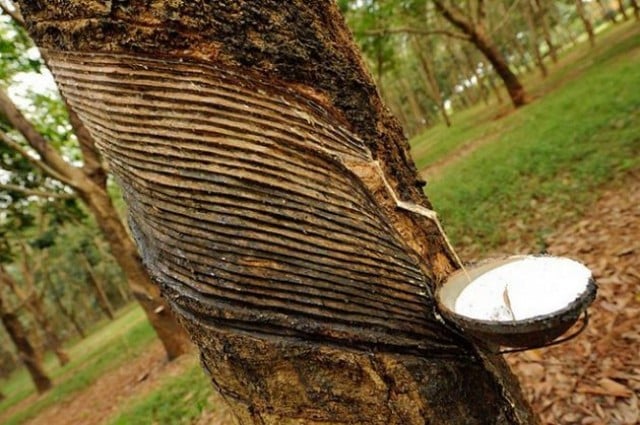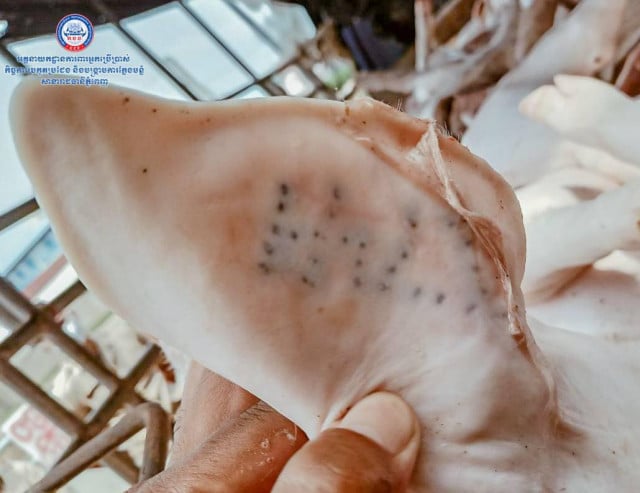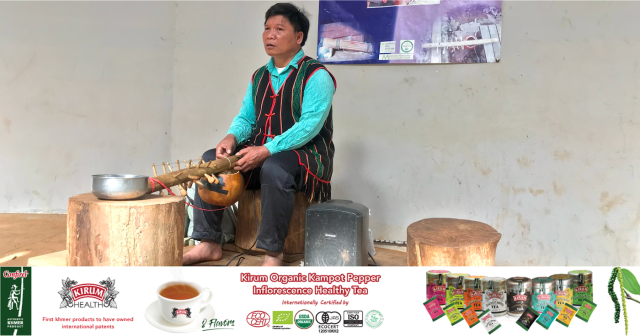Rubber growers seek government help as price plummets

- Nhong Heng
- May 12, 2019 6:12 AM
Thmey Thmey journalist Nhong Heng interviews Men Sopheak, president of the Association for Rubber Development in Cambodia, about the decline in world rubber prices. Cambodian rubber growers are being hit with losses as prices continue to plummet. Although rubber exports rose 23 percent in the first quarter, the price dropped from $1,400 a tonne to $1,279 a tonne in April, the Ministry of Agriculture says. Men Sopheak says plantation companies are under growing pressure, facing bleak prospects of survival unless prices return to between $1,600 and $2,000 a tonne. He says the government should suspend a $50 export duty on rubber to help companies recover.
NHONG HENG: How will rubber growers survive as rubber prices continue to drop?
MEN SOPHEAK: Compared to the same period last year, the price during this quarter has fallen. The latest price of $1,270 poses a major challenge for growers, especially large companies which have invested in both plantations and processing plants for export.
Companies are going to continue suffering losses if the price remains below $1,600 a tonne. Family-sized plantations can just break even under the latest price of $1,279 a tonne. But this price is not sustainable for larger companies which have higher input costs. So there's no way they can make a profit when the price stays below $1,600 a tonne.
NHONG HENG: What's behind the drop in rubber prices?
MEN SOPHEAK: Uncertainty on the international market —especially trade tensions between the U.S. and China —is the major factor behind the price drop. The U.S. has put pressure on China, causing trade volumes from the latter to the U.S. to decline. This has a ripple effect on other industries, including rubber which is the main material for producing tires. The export of China-made tires to the U.S. and European markets is being hampered by tougher specification requirements and import tariffs. As a result, sales have declined and so has production.
Banks stop lending
Another reason behind the price slump is the banking sector. In the past, banks lent a lot to the rubber industry. But problems with the world economy in the past few years have prompted the banking sector to stop lending. The move has had a significant impact on the rubber industry
Last but not least, an oversupply of rubber is also helping to drive down prices on the international market. Globally, the demand for rubber is around 12 million tonnes as opposed to 14 million tonnes on the supply side.
NHONG HENG: How long do you think this situation will continue and when might it start easing for growers?
MEN SOPHEAK: According to various forecasts, the rubber price is unlikely to recover much. It will not jump to more than $2,000 a tonne over the next one to two years. It won't go beyond that. If the current price level bounces to stay between $1,600 and $2,000, the industry will be able to survive and keep businesses going. But if it stays below $1,500 indefinitely, investors will face a crisis.
NHONG HENG: What can Cambodia do domestically to help rubber growers survive this storm?
MEN SOPHIA: It will take time and patience to restore the price to an appropriate level. Thailand, Indonesia, and Malaysia are the largest suppliers of rubber to the international market. Cambodia is not the only one being hit by low prices — it’s everyone in this business around the world. The price of rubber is the same globally and the only differences are with logistics and transport costs. For many years, the three countries have been discussing ways to help restore prices to a level where everyone involved in the sector can survive.
Thailand, Indonesia and Malaysia reduce supply
In April this year, the governments of the three countries agreed to reduce the supply of rubber by around 300,000 tonnes in an attempt to restore the balance between supply and demand on the international market. This effort aims to reduce oversupply and allow the price to bounce back a notch. Thanks to this move, the rubber price on the international market was a bit more than $1,600 in April.
In Cambodia, the price was above $1,400 a tonne. But both small growers and companies in Cambodia are balking at any plans to grow more rubber trees due to low volumes compared with other crops which they believe offer larger profit margins. Rubber plantations cover more than 430,000 ha of land nationwide and the area has remained the same over the past two to three years.
'Input costs are quite high in Cambodia'
In this business, we compete not only among ourselves but also against everyone else in the world market. Buyers go to purchase where the best offers — the lowest prices — are available. For example, in Vietnam low input costs allow growers there to sell rubber at the lowest price. It's similar in Africa. So buyers go to source rubber from those markets.
Unfortunately, input costs are quite high in Cambodia and the output of rubber is relatively small. That's why we’re not a prime destination where buyers rush to source the commodity. We're just filling in supply shortages that neighboring producers like Vietnam and Malaysia face from time to time. They buy from us to fill gaps in their supplies to the international market.
Incentive for growers to keep industry alive
Exports of rubber from Cambodia are subject to an export duty of around $50 for quantities worth between $1,000 and $2,000. In Cambodia, rubber fetches an average price of a little more than $1,270 a tonne. This price is subject to $50 for export duty. Input costs borne by rubber companies meanwhile range from $1,500 to $1,600 a tonne. This means there's no margin left to make any profit at all but they still have to pay $50 in export duties for every tonne of exported rubber.
So in this interim period when our rubber industry is facing a tough time trying to survive, it would be a good incentive for the rubber growers if the government suspends this export duty temporarily to allow industry operators to survive until the price on the international market bounces back. At that point, the export tariff could be reapplied like before. Such a scheme could serve as a helpful incentive for rubber growers to keep the industry alive.















